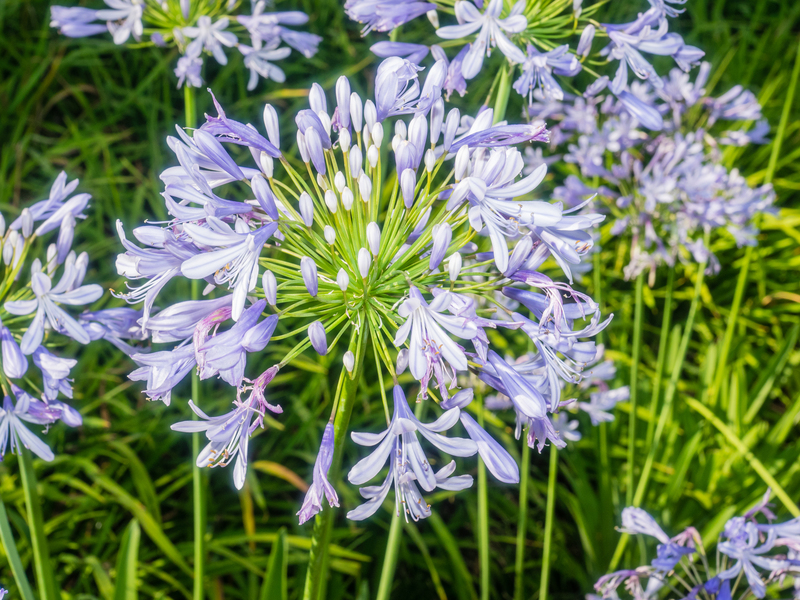Must-Have Tools for Outdoor Gardening Success
Posted on 16/08/2025
Must-Have Tools for Outdoor Gardening Success
If you're eager to transform your yard into a thriving oasis, equipping yourself with the right tools for outdoor gardening is the foundation for successful growing. Whether you're tending to a lush vegetable patch, a vibrant flower bed, or a soothing landscape of shrubs and trees, having an arsenal of top-quality gardening tools ensures efficiency, healthier plants, and more enjoyable time spent outdoors. In this complete guide, we'll explore the must-have outdoor gardening tools that every gardener--beginner or veteran--should own for optimal results.

Why the Right Gardening Tools Matter
Before digging into the essential tools, let's understand why investing in the right gardening gear is crucial:
- Improved Efficiency: The correct tools make tasks quicker and easier, allowing you to cover more ground with less stress on your body.
- Better Plant Health: Utilizing sharp and proper equipment leads to cleaner cuts, less root disturbance, and overall healthier plants.
- Personal Safety: Durable, ergonomic tools help prevent injuries and minimize fatigue during repetitive gardening activities.
- Cost Savings: Quality tools often last longer, saving money over time by reducing the need for frequent replacements.
With these benefits in mind, let's explore the essential outdoor gardening tools that are vital for success in any garden setting.
Essential Gardening Tools for Every Gardener
1. Gardening Gloves
Why you need them: Protecting your hands is non-negotiable. Quality gardening gloves shield your skin from thorns, sharp objects, soil-borne pathogens, and blisters.
Pro tip: Choose gloves made of durable, breathable materials with reinforced fingertips. Opt for waterproof versions if you'll be working in damp soil or with chemicals.
2. Spade or Garden Shovel
Why you need it: From digging holes and edging beds to transplanting shrubs, a trusty spade is vital. Garden shovels with flat blades are best for slicing and trenching, while rounded or pointed shovels are excellent for digging deeper holes and loosening compacted soil.
- *Look for: Ergonomic handles and sturdy, sharp, rust-resistant blades*
3. Hand Trowel
Every gardener relies on a hand trowel for versatile tasks such as planting, digging small holes, removing weeds, and even mixing soil amendments. Consider one with a comfortable grip and marked measurements for depth.
4. Pruning Shears (Secateurs)
Why you need them: Pruning shears are indispensable for trimming, deadheading, and shaping plants. Clean, sharp cuts encourage healthy growth and minimize disease risk.
- *Bypass pruners* are ideal for soft stems
- *Anvil pruners* are best for dry, woody branches
5. Garden Fork
This sturdy, multi-tined tool is perfect for turning soil, aerating garden beds, and integrating compost and organic matter. Its strong design breaks up compacted earth far more effectively than a spade alone.
6. Hoe
Eliminating weeds is a constant chore in outdoor gardening. A hoe, whether it's a traditional, draw, or stirrup style, makes it much easier to slice weeds just below the soil surface. It's also essential for shaping beds and creating furrows for planting seeds.
7. Watering Tools: Hose and Watering Can
All plants need water, but the delivery matters! A flexible garden hose with adjustable nozzles provides efficient watering, while a watering can allows for precision around delicate seedlings or indoor/outdoor containers.
- *Invest in a hose with a kink-free design and durable connectors*
- *Look for watering cans with balanced handles and removable roses*
8. Rake
There are two major types every gardener should consider:
- Leaf rake: For gathering leaves, grass clippings, and debris
- Garden (bow) rake: For leveling soil, spreading mulch, and working compost
Tip: Choose rakes with comfortable, splinter-free handles and replaceable tines for longer life.
9. Wheelbarrow or Garden Cart
Transporting soil, mulch, plants, and stones is easy with a sturdy wheelbarrow or two-wheeled garden cart. These tools minimize strain, improve efficiency, and protect your back during heavy-lifting tasks.
10. Loppers
Dealing with thicker branches? Loppers are like oversized pruning shears designed to handle branches up to 2 inches in diameter. Their long handles provide extra leverage for cutting through woody stems without strain.
11. Garden Knife (Hori Hori)
The Japanese hori hori knife is a multi-tasking marvel, perfect for weeding, transplanting, dividing perennials, and even cutting twine or harvesting produce. Its serrated edge powers through tangled roots with ease.
Nice-to-Have Outdoor Gardening Tools
Once you've built your basic collection, consider these outdoor garden accessories and advanced tools to make your gardening adventures even more efficient and enjoyable:
- Kneeling Pad or Garden Stool: Protect knees and reduce fatigue during long planting or weeding sessions.
- Soil pH Tester: Instantly assess whether your soil is acidic or alkaline for improved plant selection and fertilization.
- Compost Bin or Tumbler: Turn kitchen scraps and yard waste into garden gold by making your own compost.
- Garden Twine and Plant Ties: Support growing vines, secure new transplants, and keep your garden organized.
- Long-Handled Edger: Create crisp boundaries around beds and sidewalks for a polished look.
- Sprayer: Evenly apply organic pesticides, foliar fertilizers, or water to broad areas.
- Garden Scissors: Snip herbs, flowers, or delicate plants with precise, sharp blades.
How to Select High-Quality Outdoor Gardening Tools
Not all gardening equipment is created equal. Here's how to ensure you're choosing the best gardening tools for longevity and performance:
- Material: Stainless steel or carbon steel blades resist rust and maintain sharpness. Hardwood or fiberglass handles offer durability and comfort over time.
- Ergonomics: Opt for tools with padded, non-slip handles, balanced weight, and designs that reduce strain on wrists, elbows, and back.
- Maintenance: Select tools with replaceable parts, easy-to-clean surfaces, and protective sheaths or storage options.
- Warranty and Brand Reputation: Reliable brands and warranties offer peace of mind and may save money in the long run.
Try Before You Buy
When possible, test the grip and weight of a tool in-store to ensure a comfortable fit, especially if you plan on extended use. Remember: a tool that's perfect for one gardener's hand size or strength may not be the best fit for another!
Caring for Your Gardening Tools
To keep your must-have gardening tools sharp, safe, and ready for every season, follow these simple care tips:
- Clean after every use: Rinse off dirt, sap, or plant matter and dry thoroughly to prevent rust.
- Sharpen blades regularly: Use a sharpening stone or file to maintain clean, precise cuts.
- Oil metal parts: Lightly coat blades and moving joints with machine oil to inhibit corrosion.
- Check for damage: Replace splintered handles, loose screws, or cracked parts promptly for safety.
- Store properly: Hang tools on racks or keep them in a dry, sheltered area to avoid weather damage.
Outdoor Gardening Tips for Tool Maintenance & Storage
Proper care not only extends the life of your outdoor garden tools but also supports healthier plants and safer gardening experiences. Here are a few more pointers:
- Disinfect blades with rubbing alcohol between uses on different plants to prevent the spread of disease.
- Periodically check and tighten bolts on pruning shears, loppers, and other multi-part tools.
- Use sand-filled buckets or tool sharpeners as part of your regular cleaning routine.

Frequently Asked Questions About Outdoor Gardening Tools
What's the difference between cheap and expensive garden tools?
Budget tools may seem cost-effective initially but often lack the durability, ergonomic comfort, and efficient performance of their higher-priced counterparts. Investing in quality pays off over time through fewer replacements and better gardening results.
How many tools do I really need to start outdoor gardening?
Start with the basics: gloves, spade or shovel, hand trowel, pruning shears, and a watering can or hose. As your garden grows, you can expand your toolkit according to your specific plant choices and landscaping projects.
Can I use indoor gardening tools outside?
Not usually. Outdoor gardening tools are designed with tougher, longer-lasting materials to withstand the elements and more demanding tasks. For best results, use tools appropriate to your environment.
Conclusion: Equip Yourself for Outdoor Gardening Success
Creating a beautiful, productive outdoor garden begins with the right gardening essentials. By selecting quality tools, caring for them properly, and understanding their specific applications, you lay the groundwork for years of gardening satisfaction and healthy, thriving plants.
Whether you're planting your very first seed or managing an expansive landscape, this checklist of must-have tools for outdoor gardening will empower you to tackle any gardening challenge with confidence.
Ready, set, garden! Equip yourself today and watch your outdoor paradise bloom.

